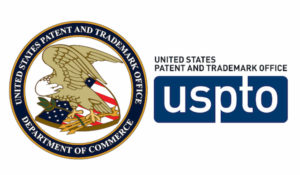The U.S. Patent and Trademark Office (USPTO) allows a patent applicant to pay reduced fees if it qualifies as a “small entity.” Many types of filing fees are reduced by 50%. These savings can be important for companies on a tight budget, and can add up where applicants have multiple filings. For example, the savings on filing fees per non-provisional patent application are currently more than 900 USD, and the current savings on the 11.5 year maintenance fee for an issued patent are a whopping 3,850 USD!
Many startups can qualify as a small entity and reap the savings. However, in some situations, even a tiny startup may need to pay the large, undiscounted entity fees. It is important to make sure you truly qualify as a small entity, because in some situations, incorrectly filing as a “small entity” can be seen as a “fraud” on the USPTO, which can result in your patent being declared “unenforceable.”
 A “small entity” for purposes of paying reduced USPTO fees is defined in 37 CFR 1.27(a) as a person, a small business concern, or a nonprofit organization. The USPTO Director has the authority to establish regulations defining independent inventors and nonprofit organizations. The U.S. Small Business Administration (SBA), a United States government agency, was given authority to establish the definition of a small business concern.
A “small entity” for purposes of paying reduced USPTO fees is defined in 37 CFR 1.27(a) as a person, a small business concern, or a nonprofit organization. The USPTO Director has the authority to establish regulations defining independent inventors and nonprofit organizations. The U.S. Small Business Administration (SBA), a United States government agency, was given authority to establish the definition of a small business concern.
For small business concerns, most U.S. patent practitioners are familiar with the basic “small entity” requirements: i) have no more than 500 employees, and ii) not be obligated to assign the patent application to an entity that is not a small entity. However, startups and other small companies should be aware that the first requirement actually states the following: “A concern eligible for reduced patent fees is one: (a) Whose number of employees, including affiliates, does not exceed 500 persons.” (emphasis added).
So, what is an “affiliate”? Is an investor an affiliate? What if that investor is a large strategic medical device company? The answer is important, but may not be straightforward.
The SBA regulations state that two entities may be “affiliates” where one has the “power to control” the other. The regulation states, in part, “[i]t does not matter whether control is exercised, so long as the power to control exists.” The control may be “affirmative or negative,” or “indirect.” Further, the SBA will “consider the totality of the circumstances,” including various factors “such as ownership, management, previous relationships with or ties to another concern, and contractual relationships.”
This is just an overview – various other issues are considered as well, and various other scenarios may also land you in large entity territory. For example, the SBA may find “affiliation” based on stock ownership, where a “person owns or controls, or has the power to control, 50% or more of the concern’s voting stock.” Further, such a situation “is a non-rebuttable basis for finding affiliation.” (emphasis added). There are other scenarios as well.
Determination of “entity size” is an individualized issue, dependent on various factors. If your medical device startup has a large investor, which for example, has over 500 employees, and that investor has the power to control your startup, you may actually need to pay large entity fees. Or, if one of the many scenarios provided by the SBA applies to your startup, you may need to pay large entity fees.
Each company’s situation is unique, and the application of large or small entity status depends on the facts of your particular business. You should seek the guidance of professional legal counsel when making any determination regarding entity size when applying for patents before the USPTO.
Tags
#entitysize, #entrepreneur, #fundedstartup, #largeentity, #medicaldevice, #patent, #patentfees, #patents, #smallentity, startup